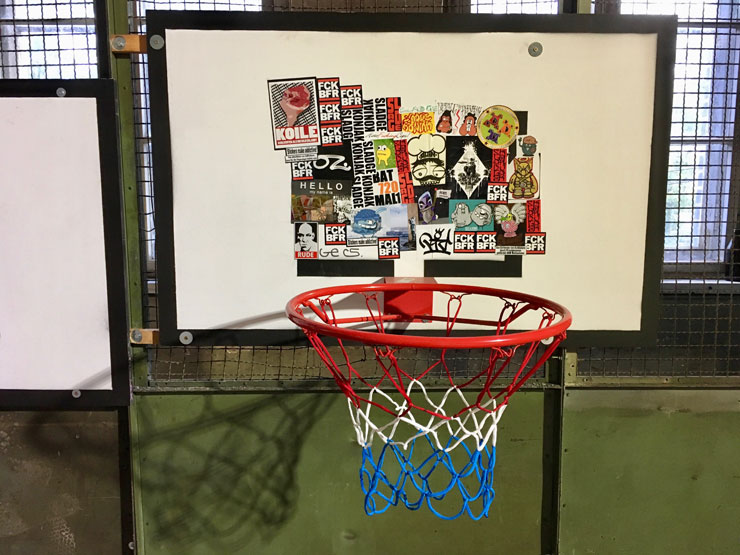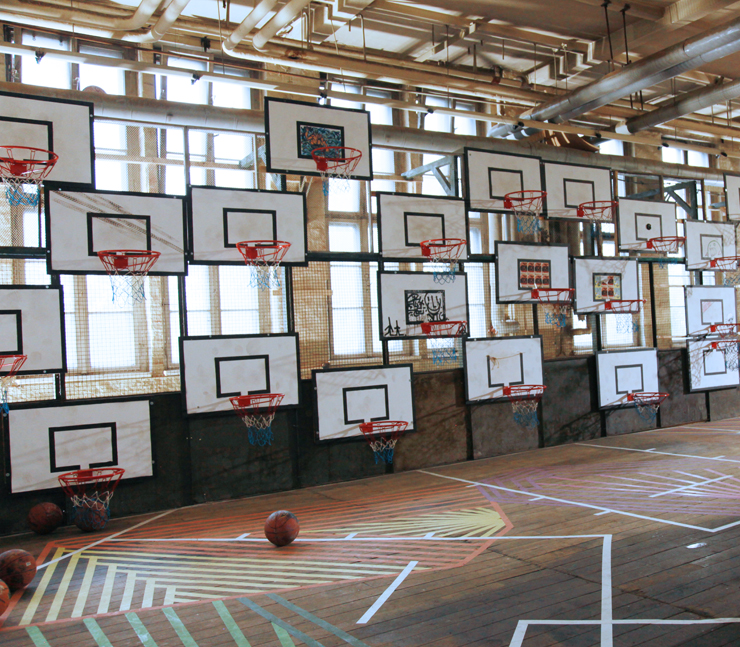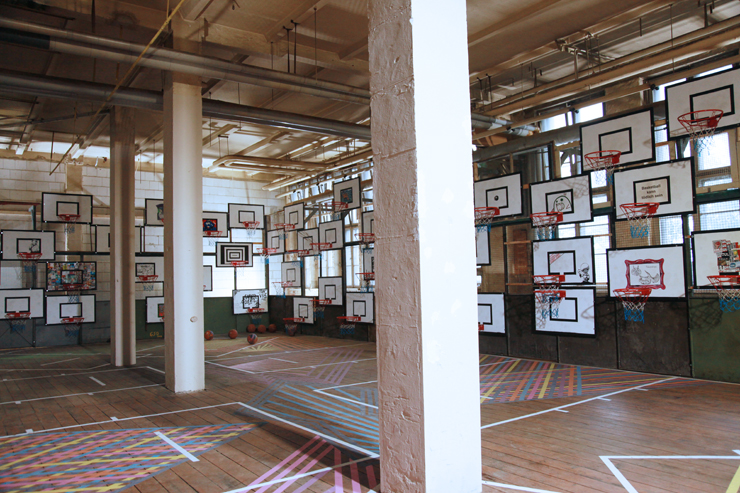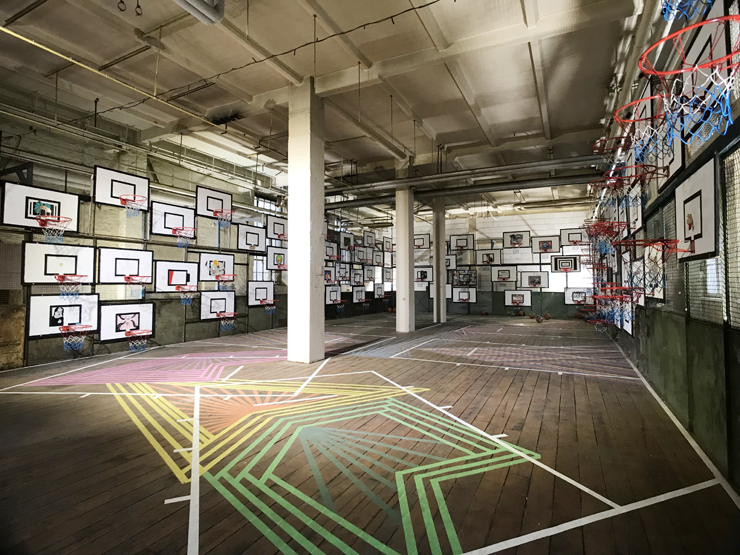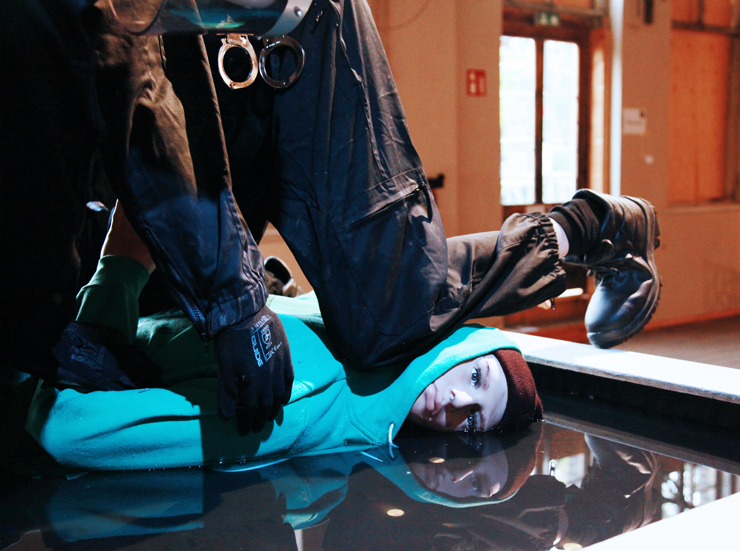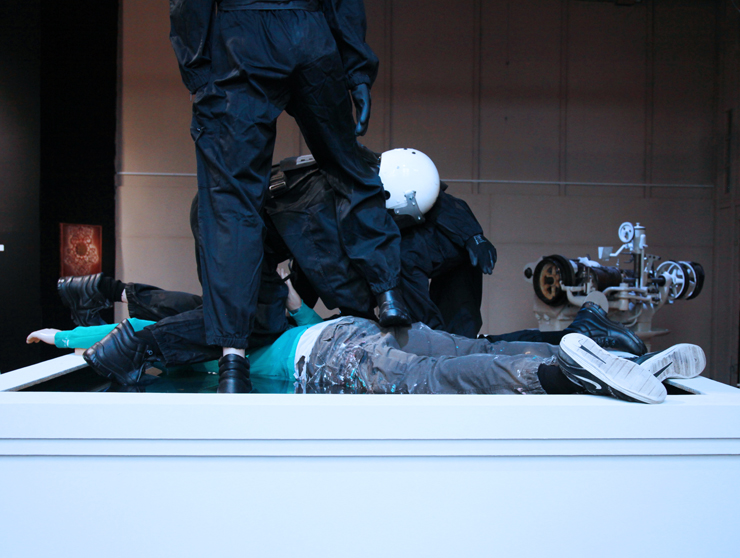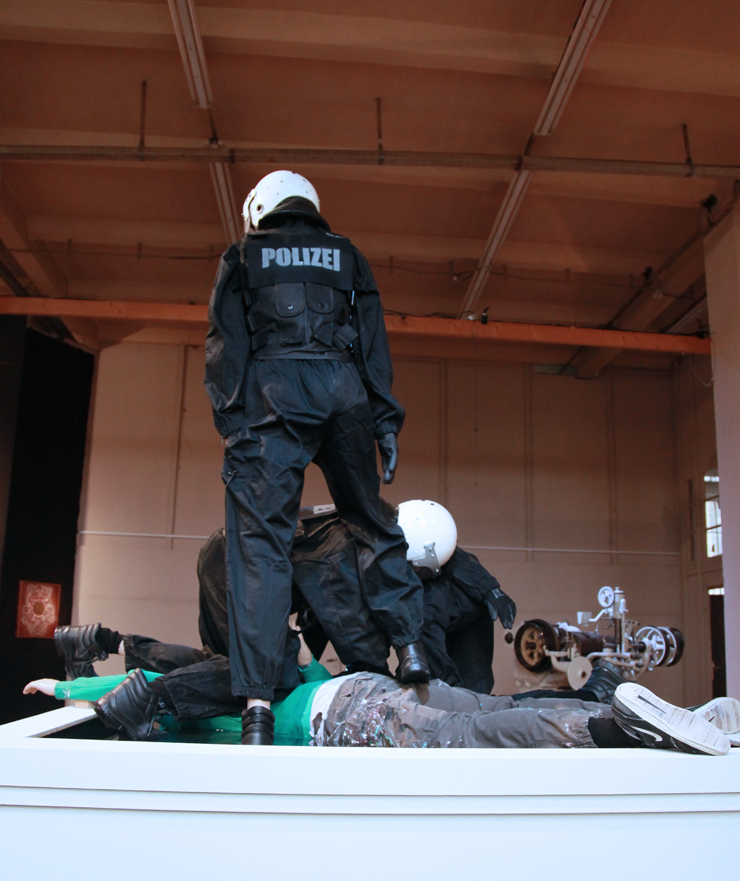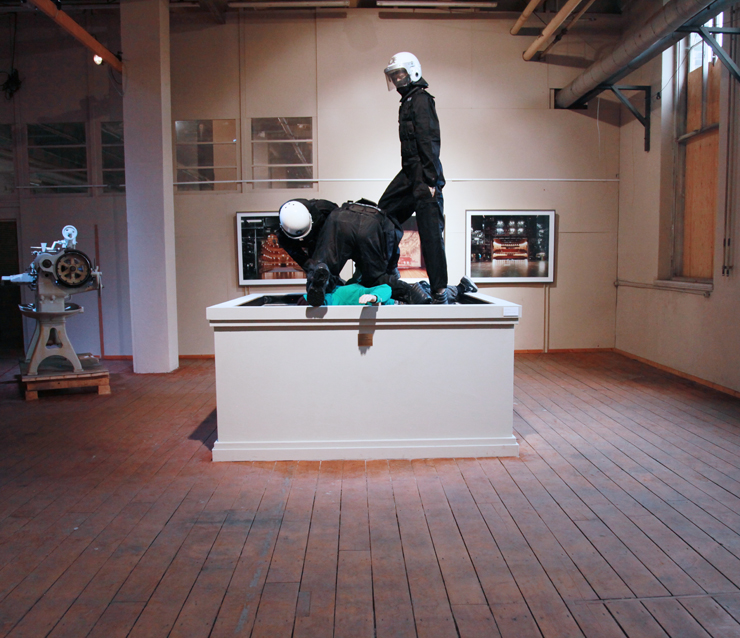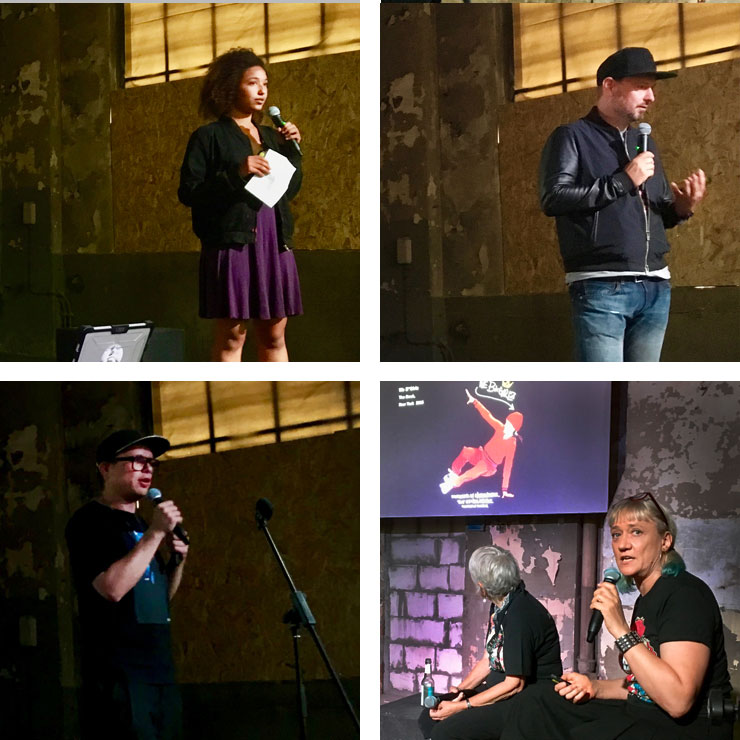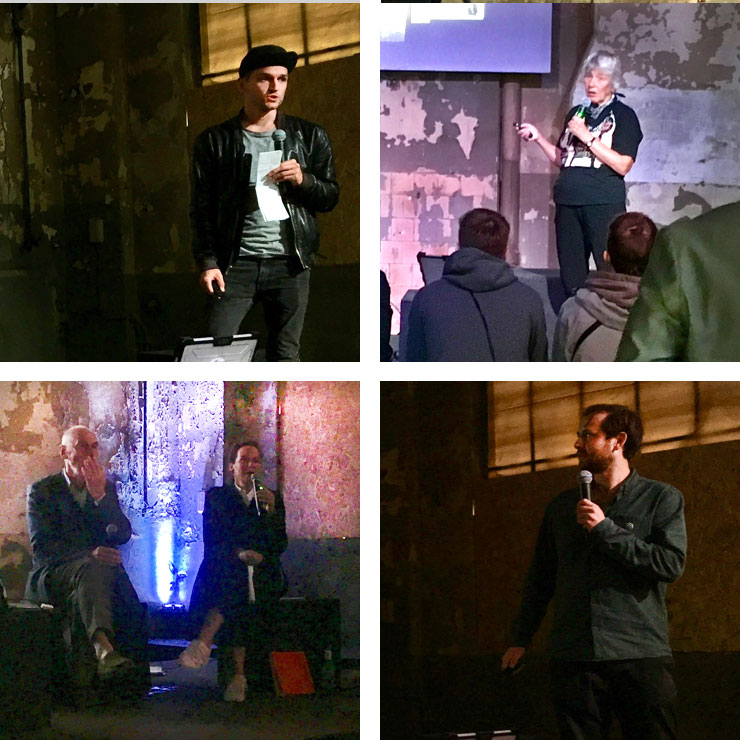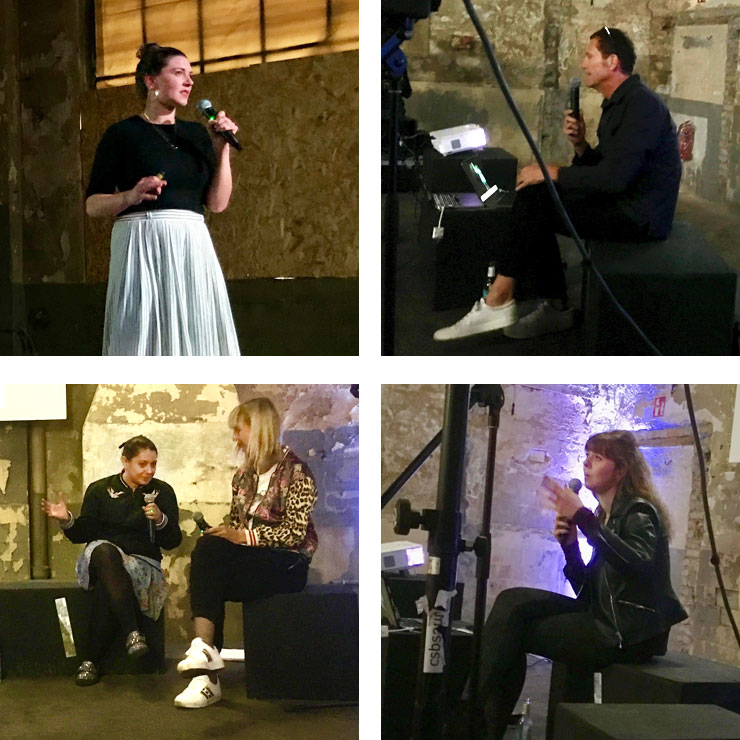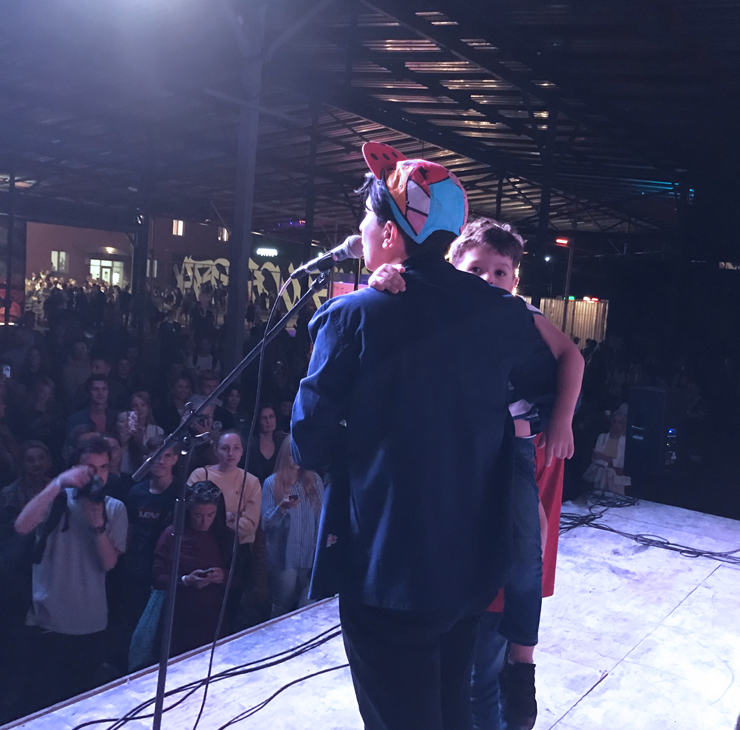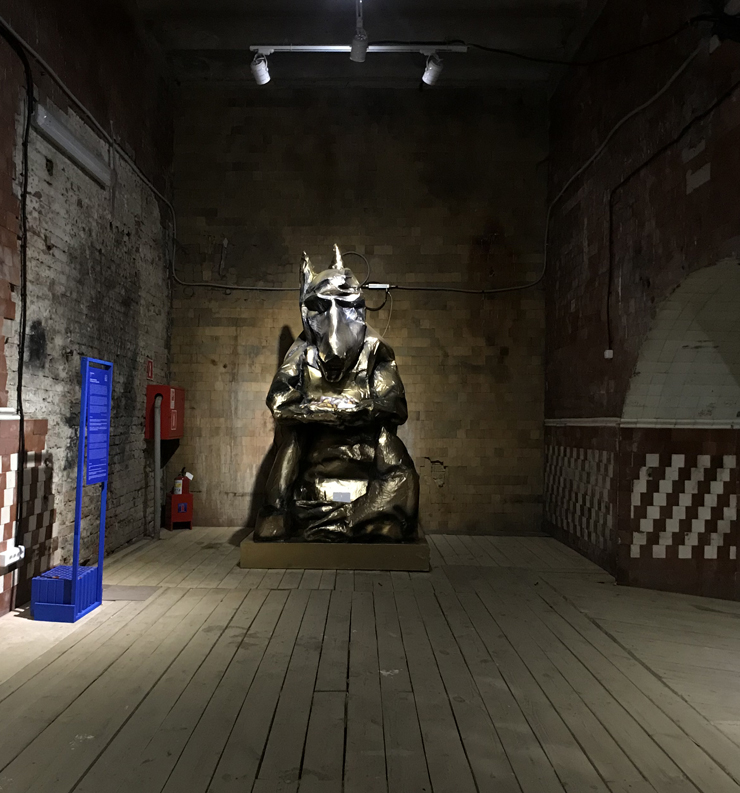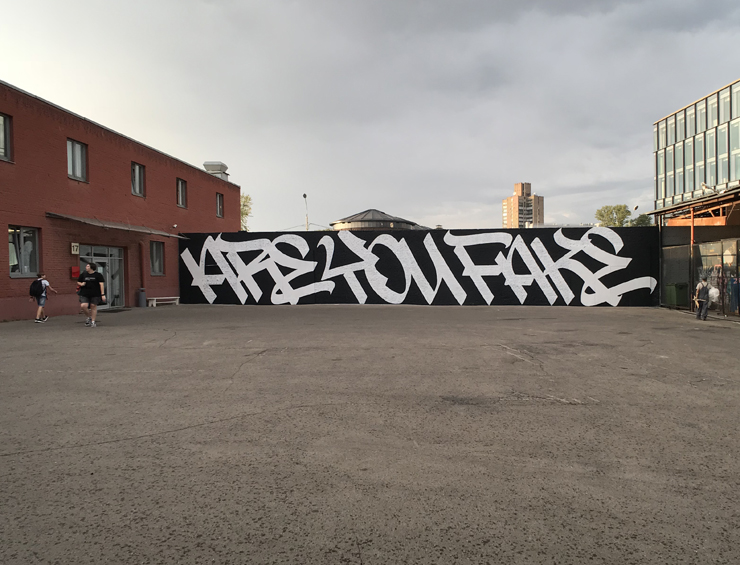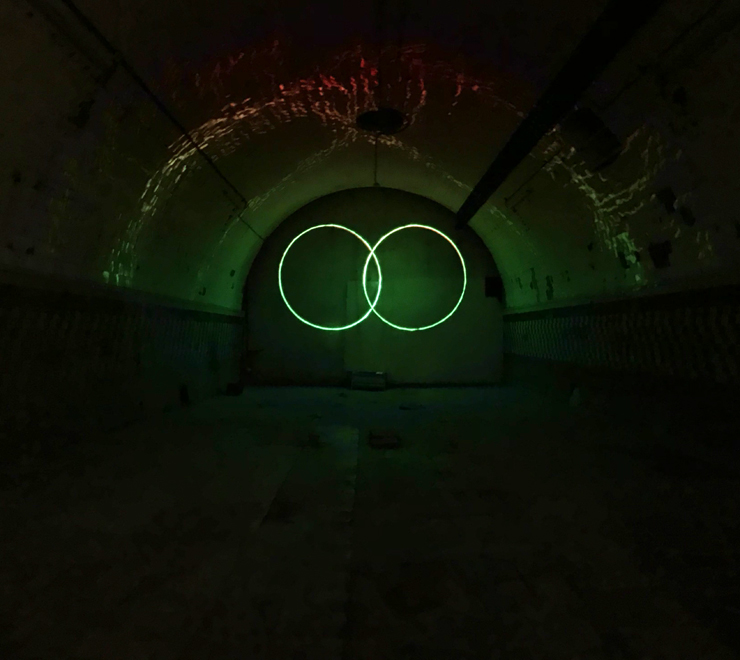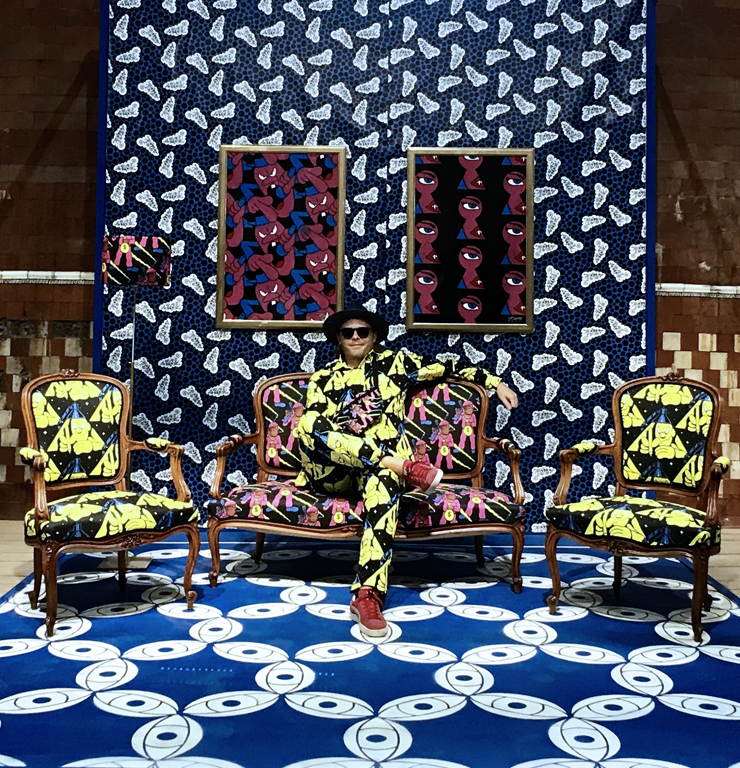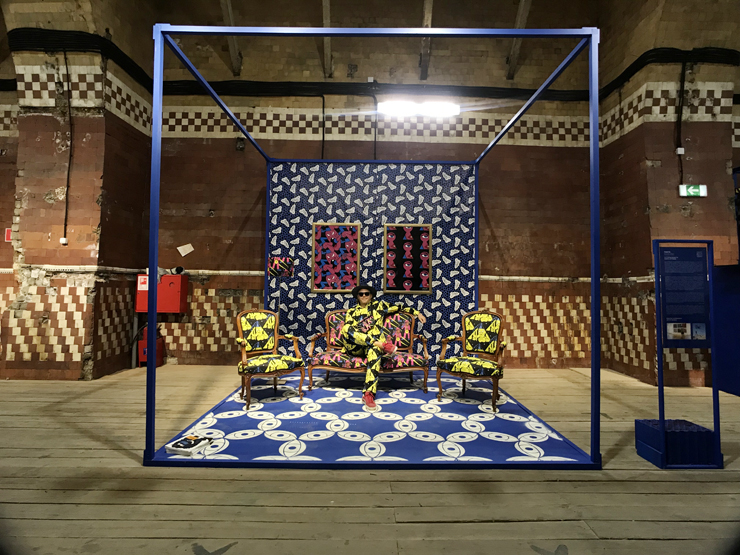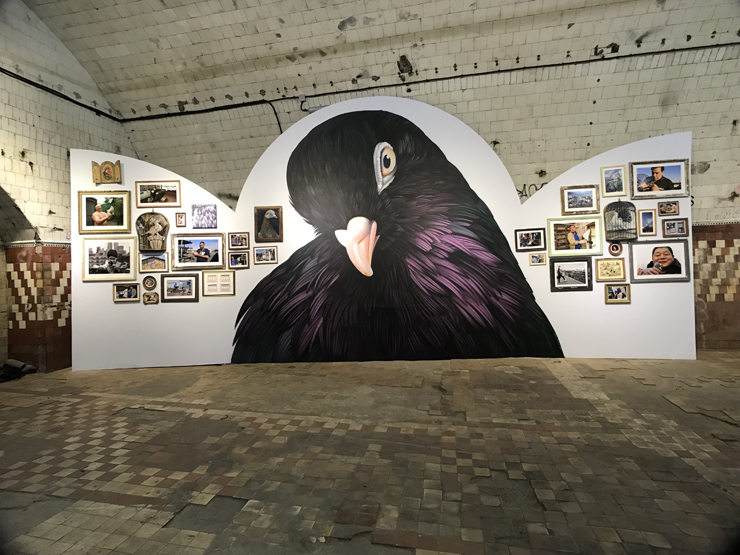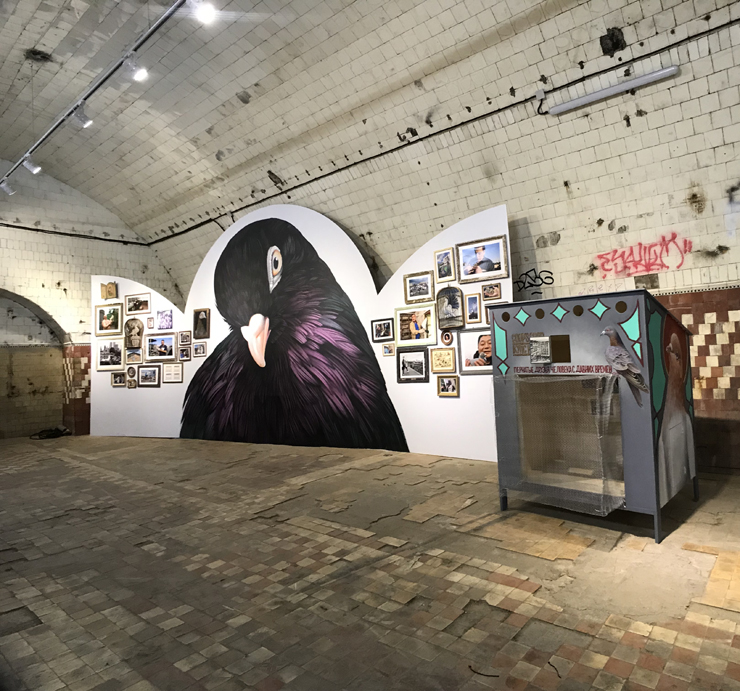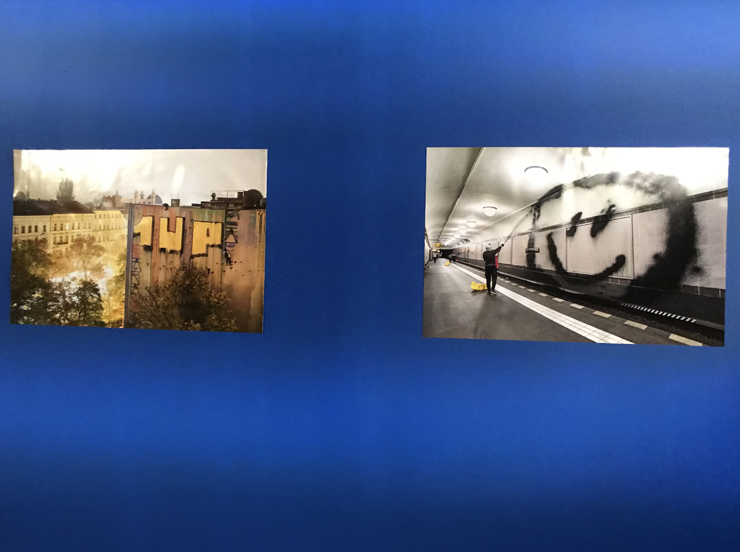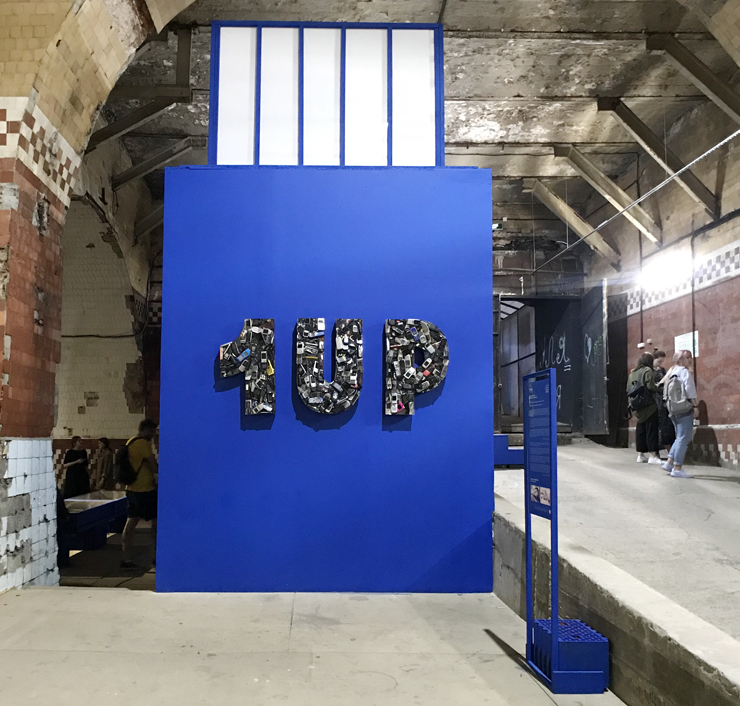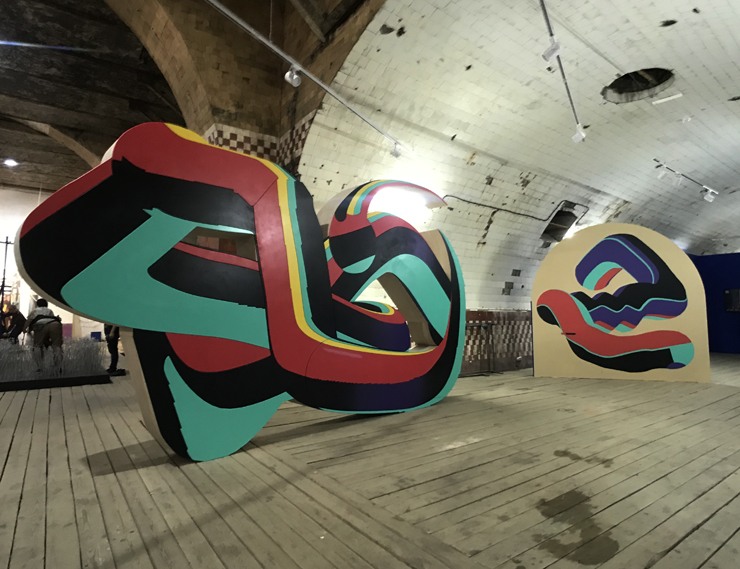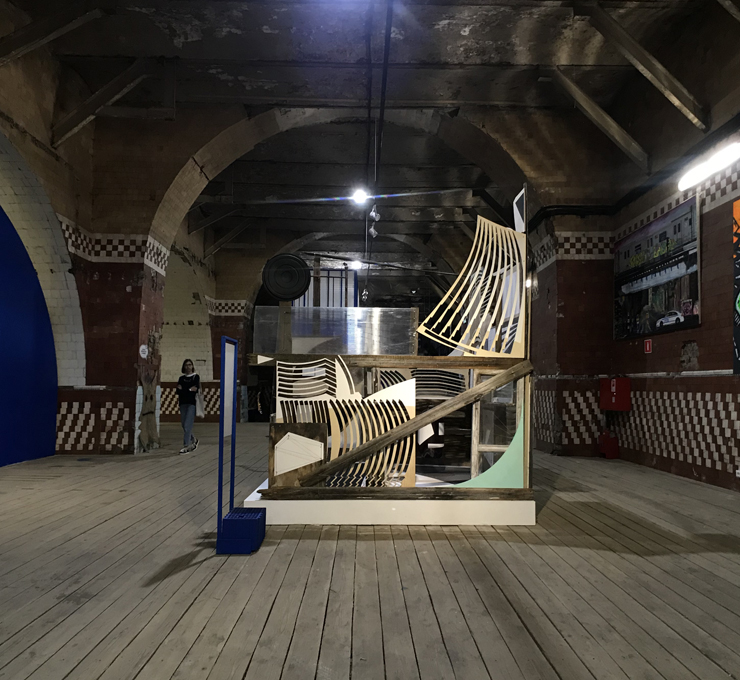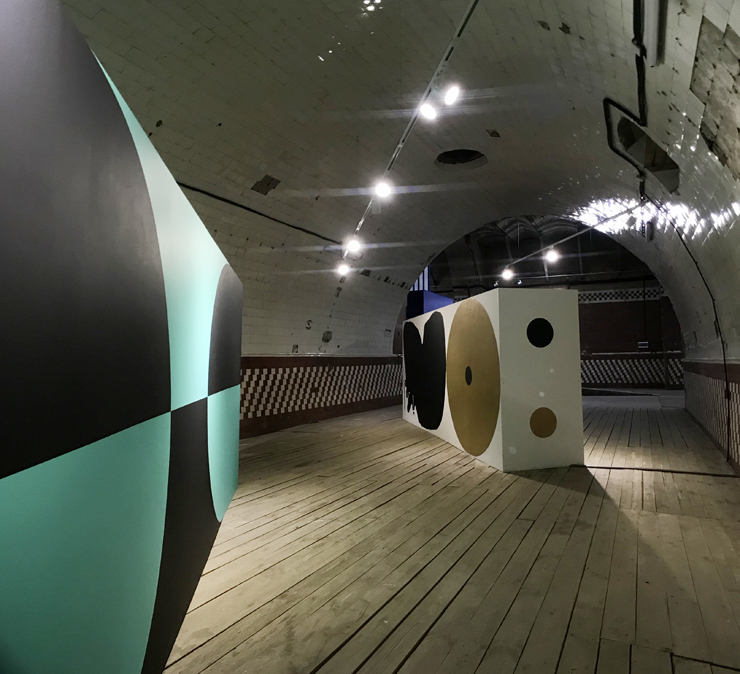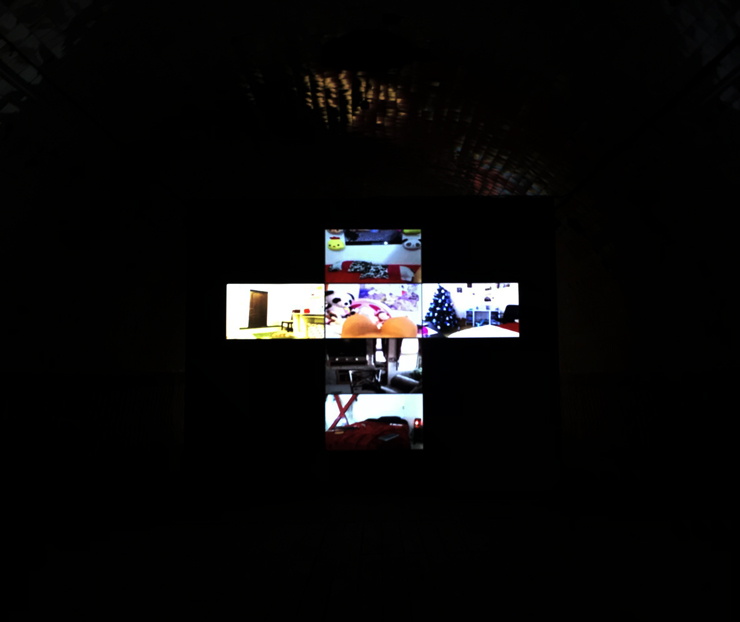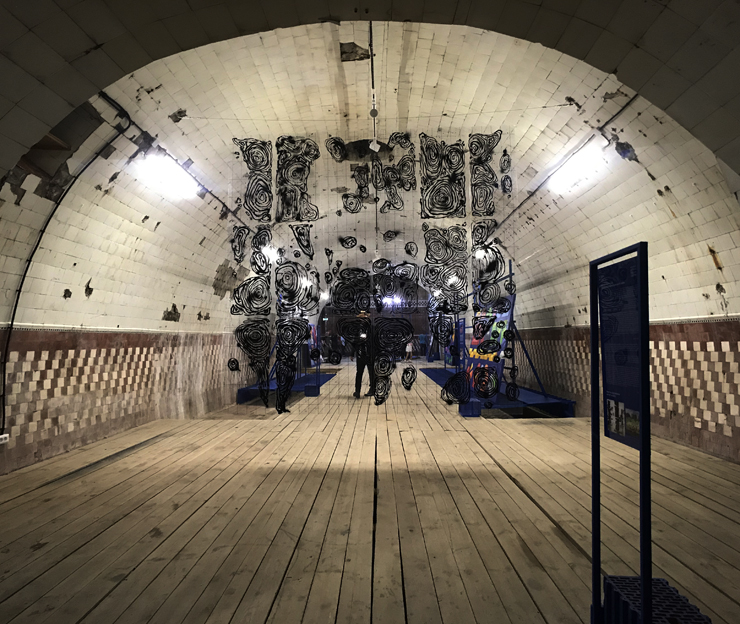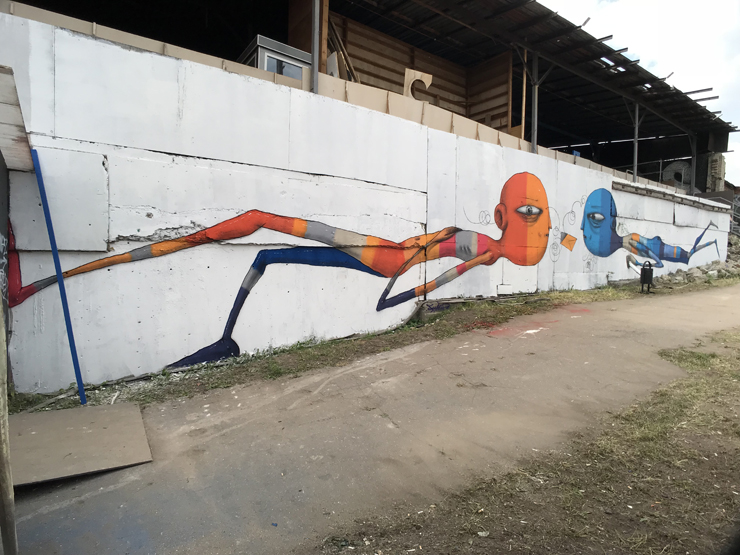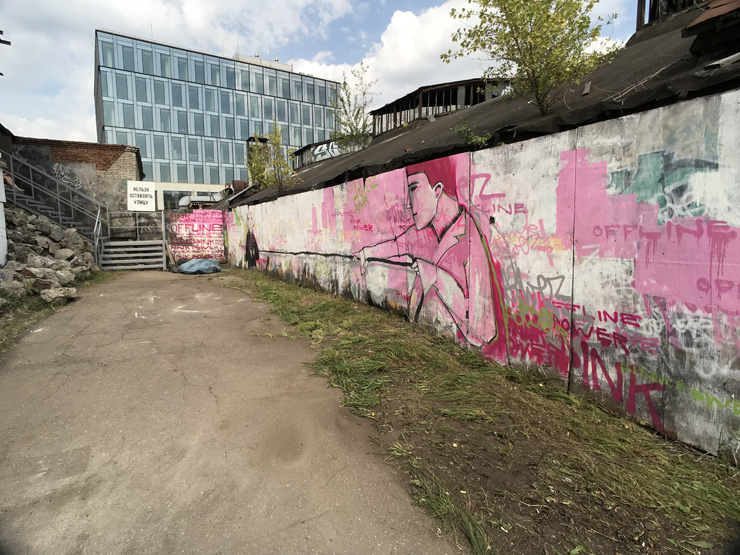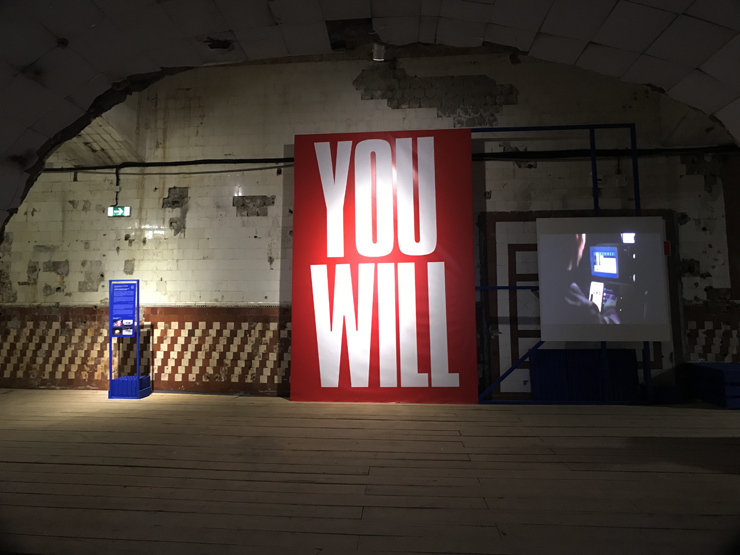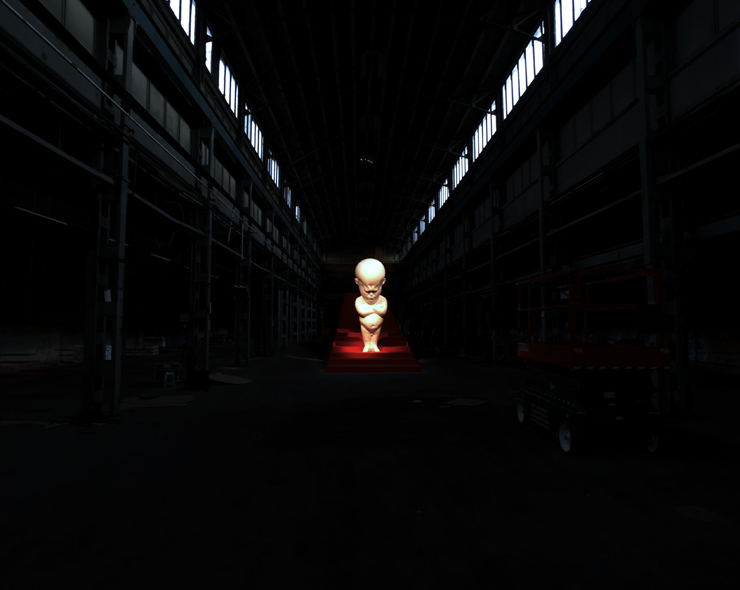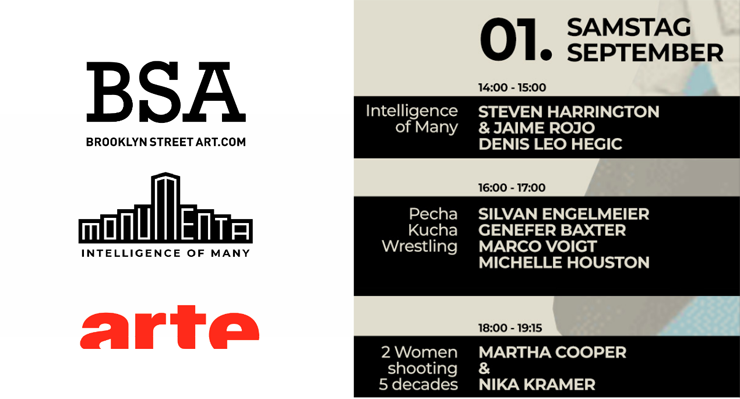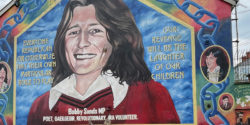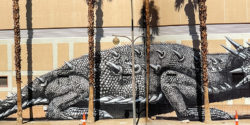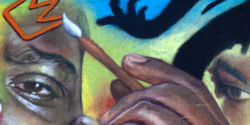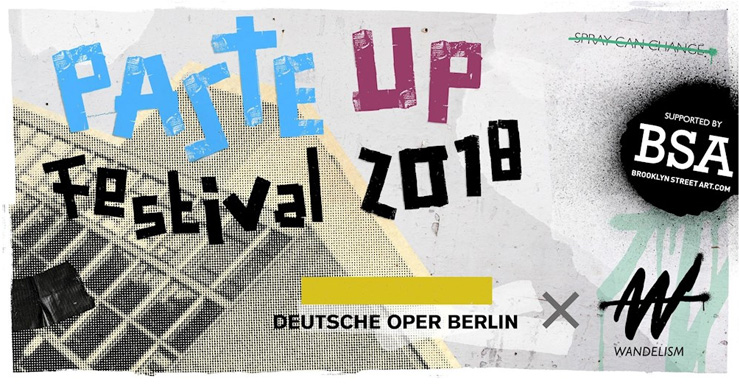
We start here with a fresh paste-up directly from Iran. It depicts the entrance to a mosque bathed in a jewel reddish haze. The lower half of the door contains a cryptic message in the three-dimensional wildstyle graffiti that captured the imagination of New Yorkers, Europeans, and Middle Easterners over time. Descending the stairs and coming out to the street it reads, “Nothing”.
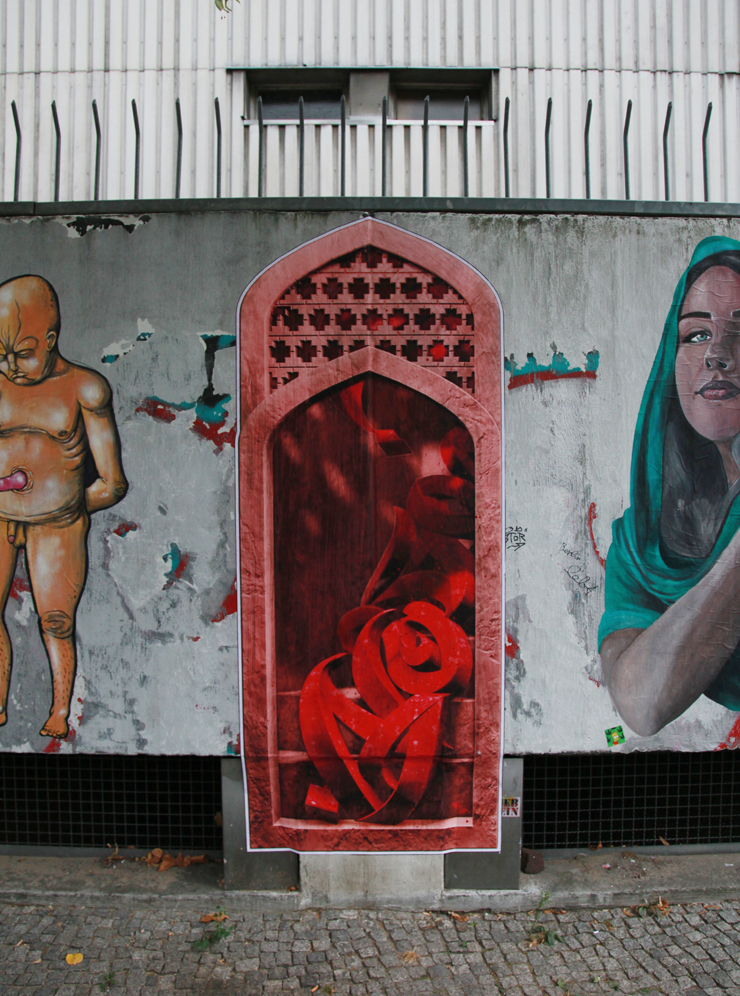
From an anonymous Iranian artist. The letters in Arabic read: ………. Paste Up Festival Berlin / September 2018. (photo © Jaime Rojo)
“If they would paste this in Iran,” says the Berlin Paste-Up Festival organizer Moritz Tonn from the artists collective Wandelism. “It would probably be considered blasphemy and the government would most likely go after the artist”. Here in the so-called “western” world the ability to criticize all institutions, including religious ones, is still officially preserved and honored – so it is interesting that a theocracy could judge this as possibly flammable piece and it has to stay anonymous here inside very permissive Berlin.
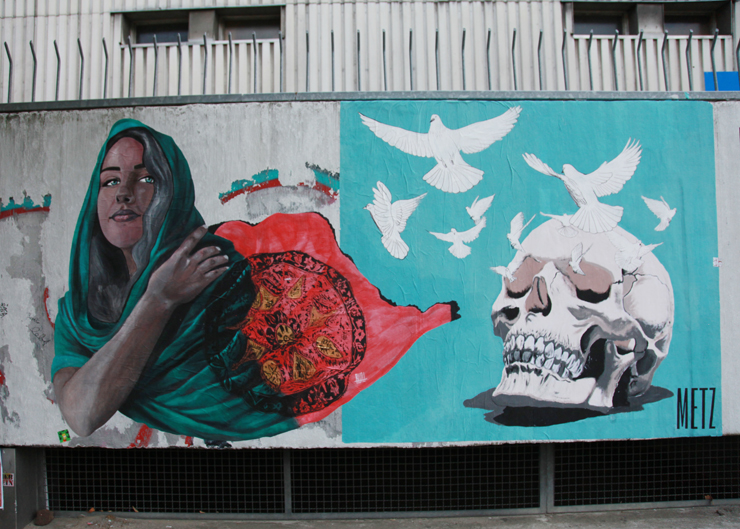
RUN . METZ. Paste Up Festival Berlin / September 2018. (photo © Jaime Rojo)
And that is only one of the reasons why exhibits like this are so crucially important to the dialogue on the street and to our collective awareness. Political, social, comic, pop, photographic, illustrative, painted, drawn, copied, figurative, immature, sarcastic,international, local, cryptic, explicit, inventive, verging on profound- these are the vox populi from many cities around the world stuck alongside one another. The mix is unusual, even odd. But the sound of the voices can be quite clarion.
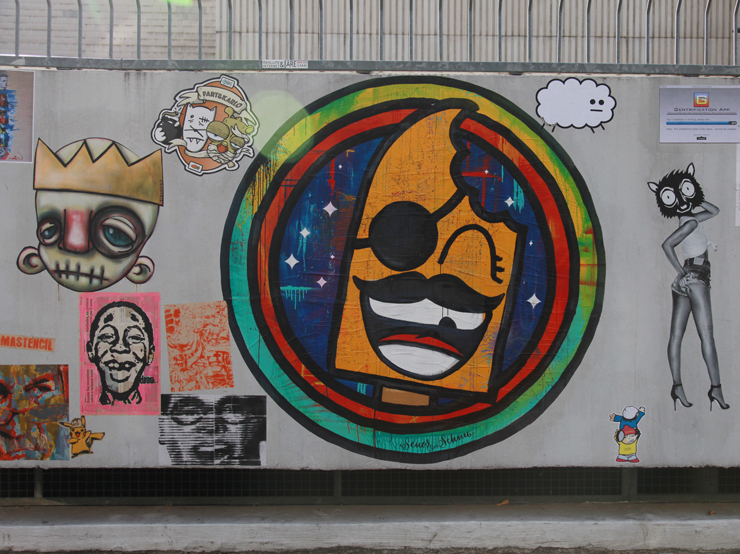
Senor Schnu (center) . Stenandol (figure with crown on left). Paste Up Festival Berlin / September 2018. (photo © Jaime Rojo)
“We got submissions from 130 artists, one to five paste-ups each,” says Moritz. “We have run out of room so we asked some of the the artists if we could put their art in the streets elsewhere around the neighborhood.”
Truthfully, there is a lot of space here that hasn’t been slapped with stickers or slathered with wheatpaste, and you can imagine that with time there will be a lot of organic growth in the massive piece that will bring the walls to full maturity/immaturity.
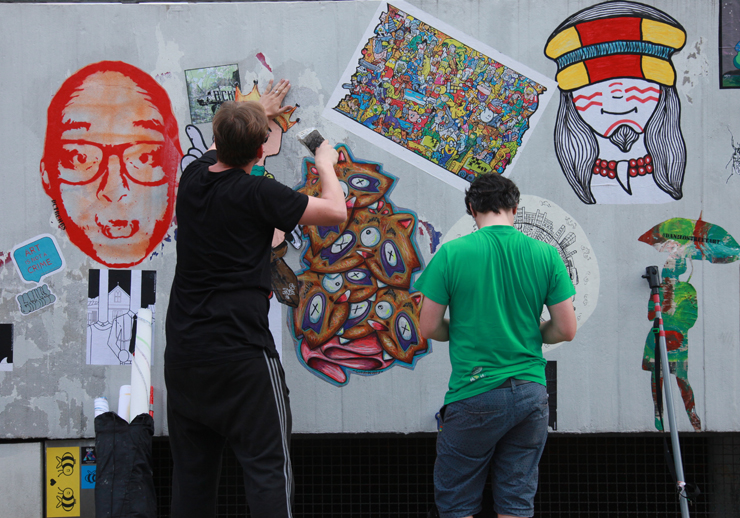
Members of the festival helping with the pasting up of the works. Paste Up Festival Berlin / September 2018. (photo © Jaime Rojo)
If one really is interested on experiencing the full scope of what’s happening with art in the streets one really must pay special attention to the artists whose practice is small. At the moment it may be that stickers and paste-ups are getting lost amidst the hurricane of mural festivals – But big murals don’t paint the whole picture.
The small stickers, the stencils, the wheat pasted posters attached to walls in back alleys, on post lamps and street furniture are a fundamental component of this truly democratic art movement. So we’re satisfied to see a large spot like this one solely dedicated to paste-ups in all their glorious incarnations.
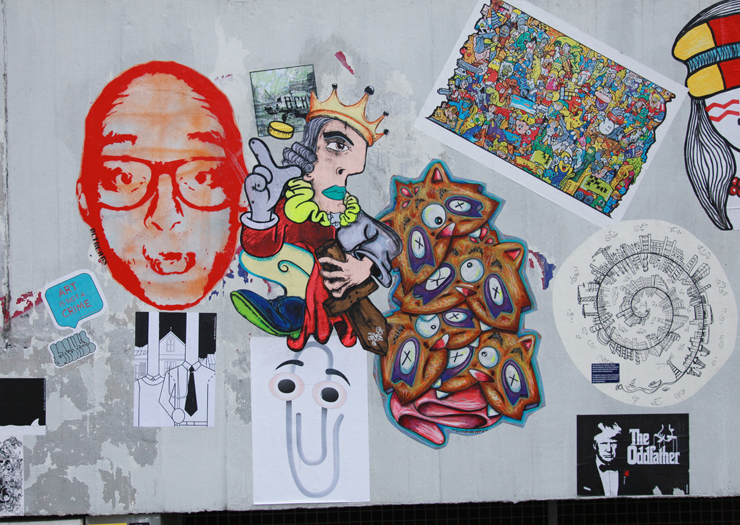
City Kitty . Gasky Graffiti . DCTRCHBS . Subdude. Paste Up Festival Berlin / September 2018. (photo © Jaime Rojo)
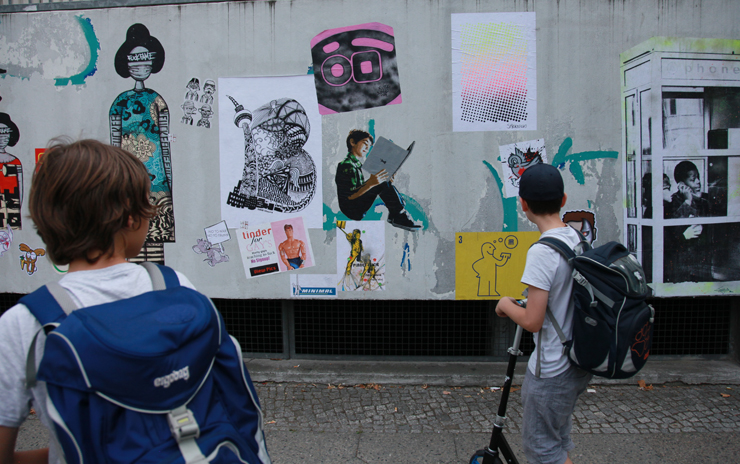
Young boys pausing on their scooters to take a look at the art works. Paste Up Festival Berlin / September 2018. (photo © Jaime Rojo)

Anna Dimitrou. Paste Up Festival Berlin / September 2018. (photo © Jaime Rojo)

Eye Of The Donut signing his piece. Paste Up Festival Berlin / September 2018. (photo © Jaime Rojo)
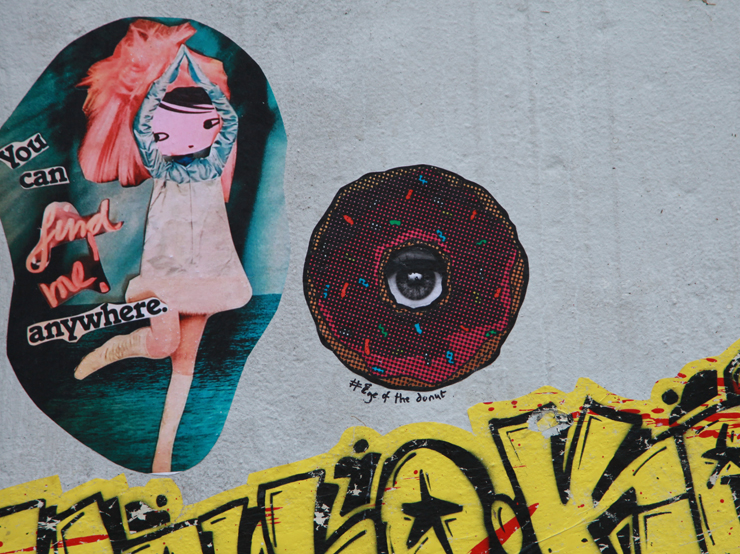
Eye Of The Donut . Phobe NY. Paste Up Festival Berlin / September 2018. (photo © Jaime Rojo)
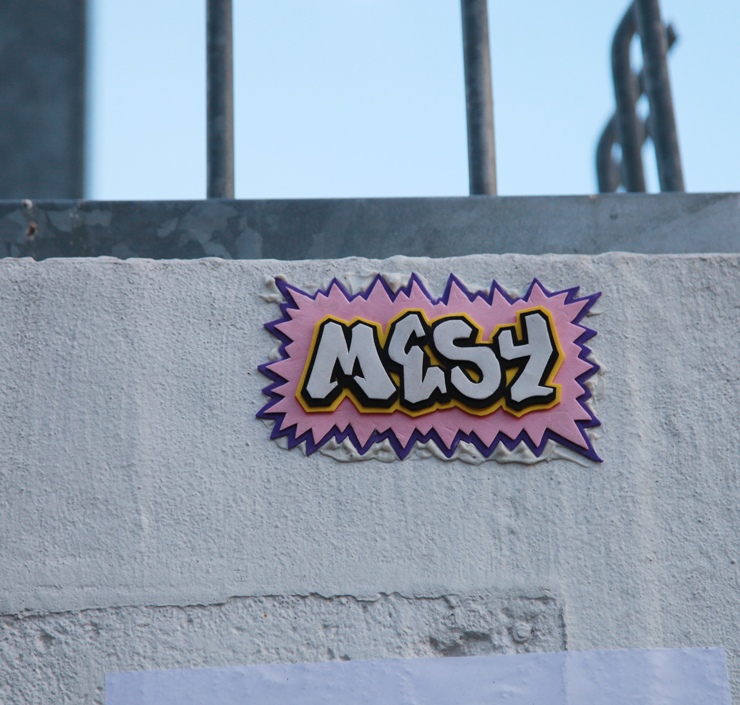
Mesy. Paste Up Festival Berlin / September 2018. (photo © Jaime Rojo)
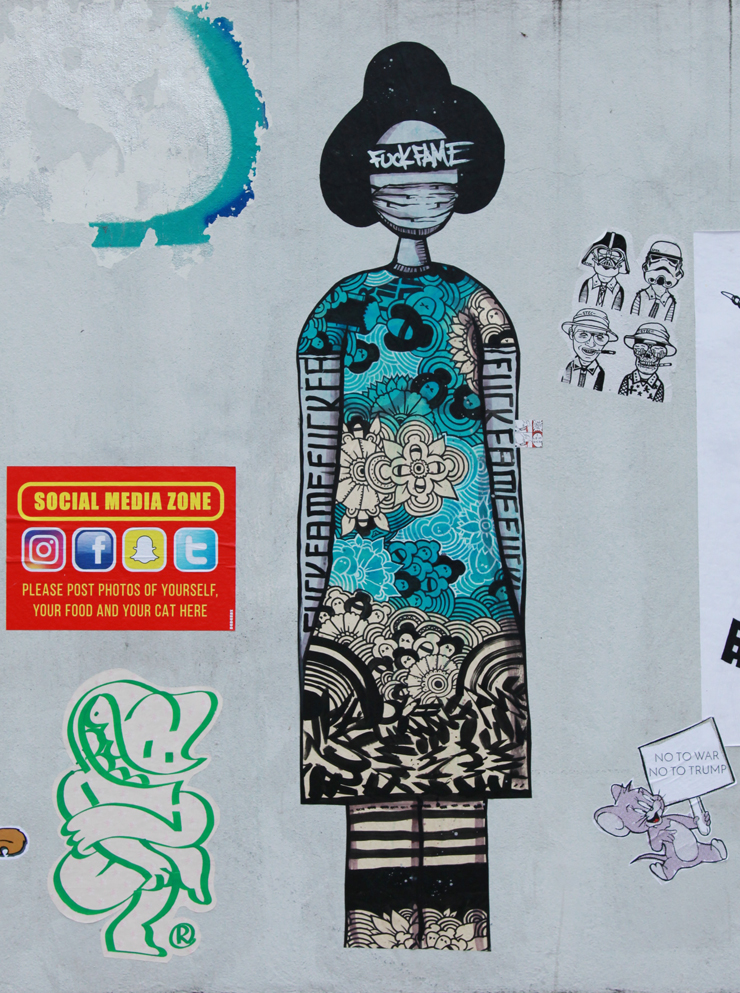
Ron Miller. Stec. Paste Up Festival Berlin / September 2018. (photo © Jaime Rojo)
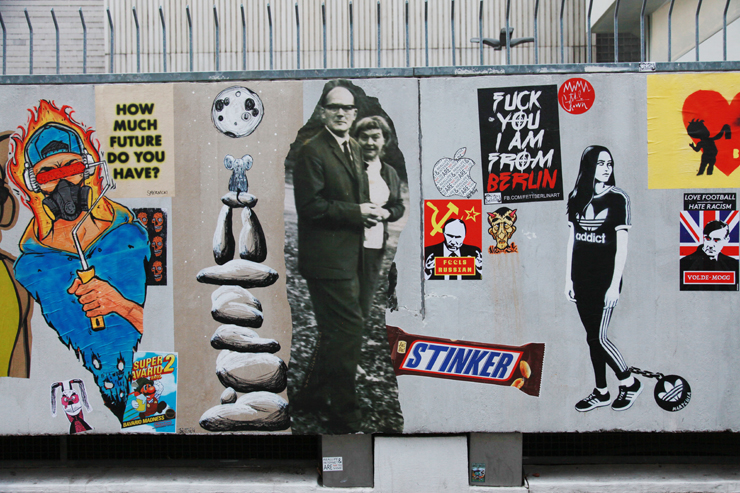
Snik . Beatsen . Not Pinky . Mary Cula . Subdude. Paste Up Festival Berlin / September 2018. (photo © Jaime Rojo)
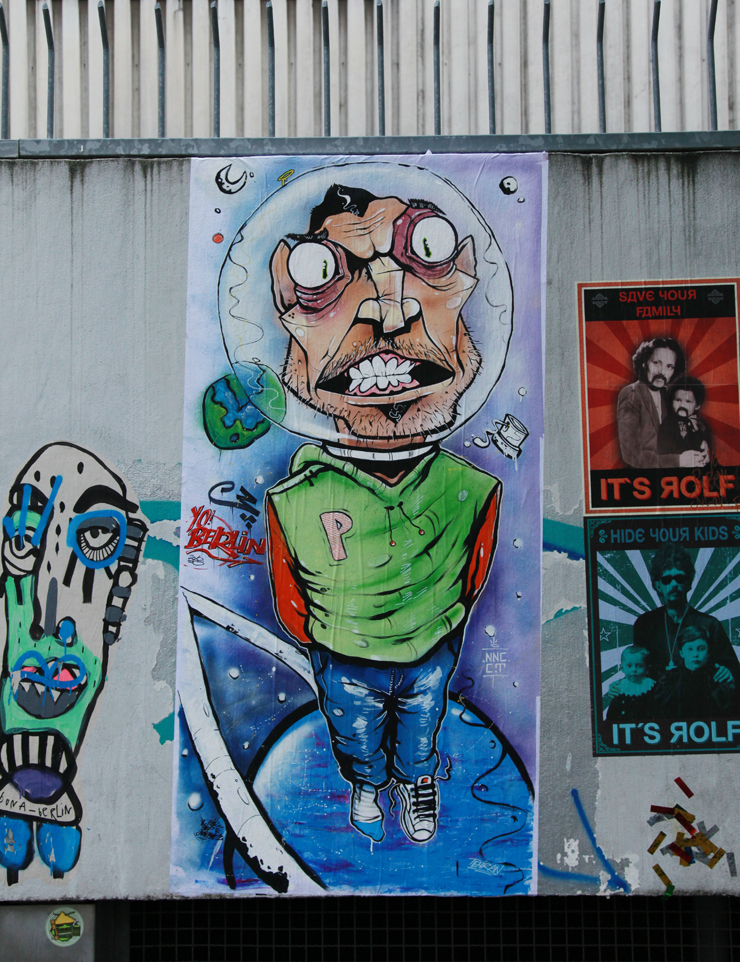
NNC CT Theran . Bona Berlin . It’s Rolf. Paste Up Festival Berlin / September 2018. (photo © Jaime Rojo)
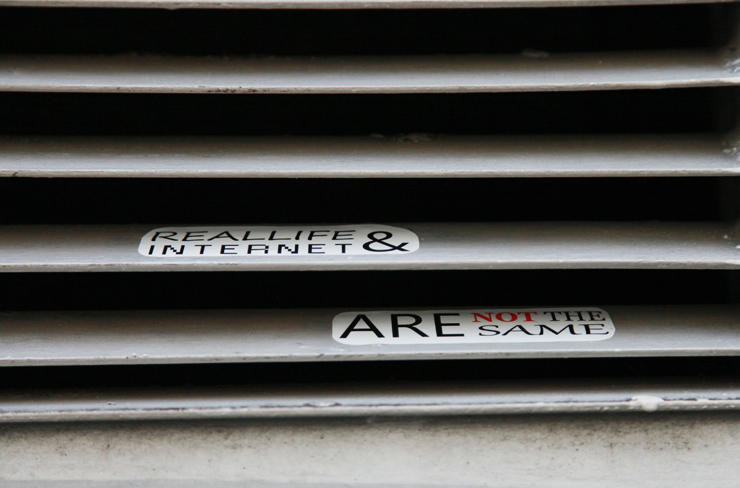
Not Pinky. Paste Up Festival Berlin / September 2018. (photo © Jaime Rojo)
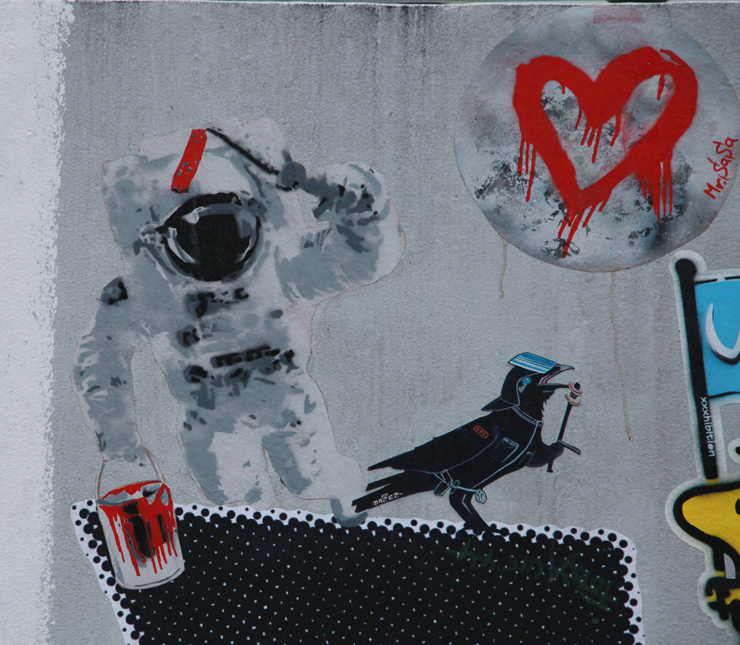
Mr. Sasa . Dazez. Paste Up Festival Berlin / September 2018. (photo © Jaime Rojo)
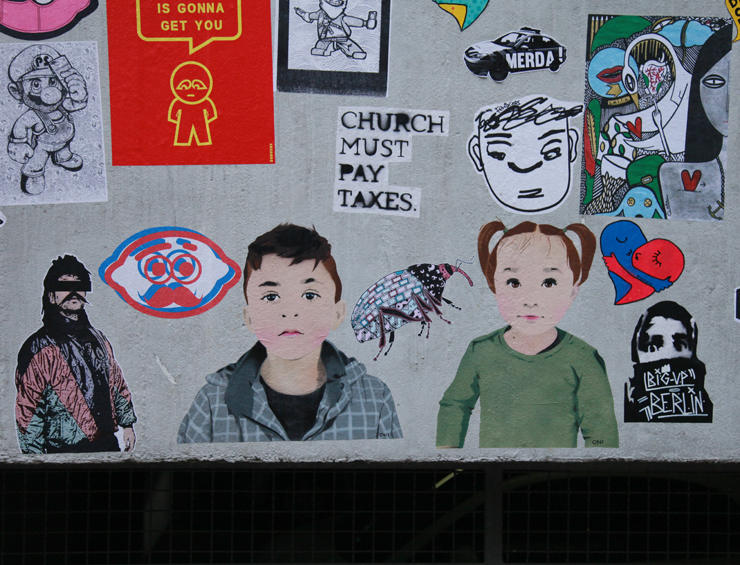
ONI . SKA. Paste Up Festival Berlin / September 2018. (photo © Jaime Rojo)
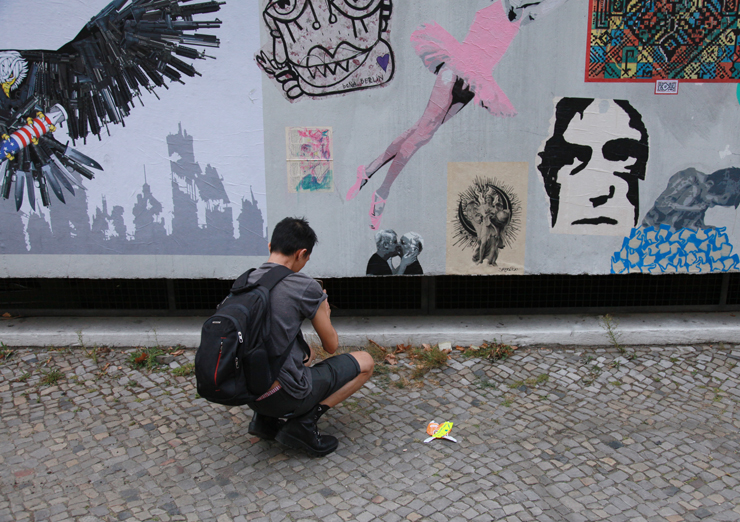
Paste Up Festival Berlin / September 2018. (photo © Jaime Rojo)
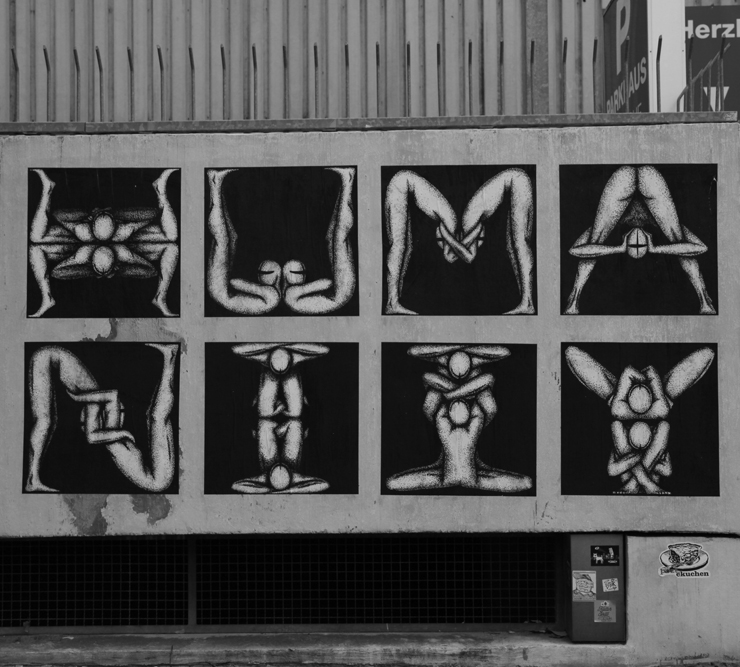
Otto OSCH Schade. Paste Up Festival Berlin / September 2018. (photo © Jaime Rojo)
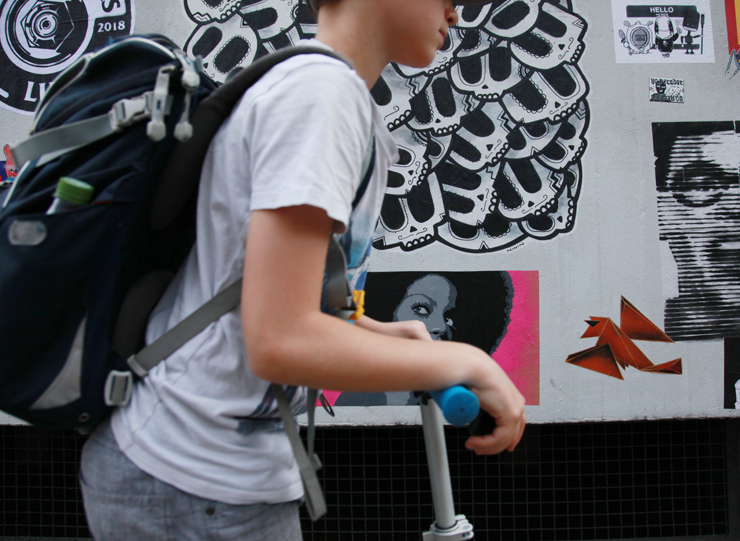
 BROOKLYN STREET ART LOVES YOU MORE EVERY DAY
BROOKLYN STREET ART LOVES YOU MORE EVERY DAY
